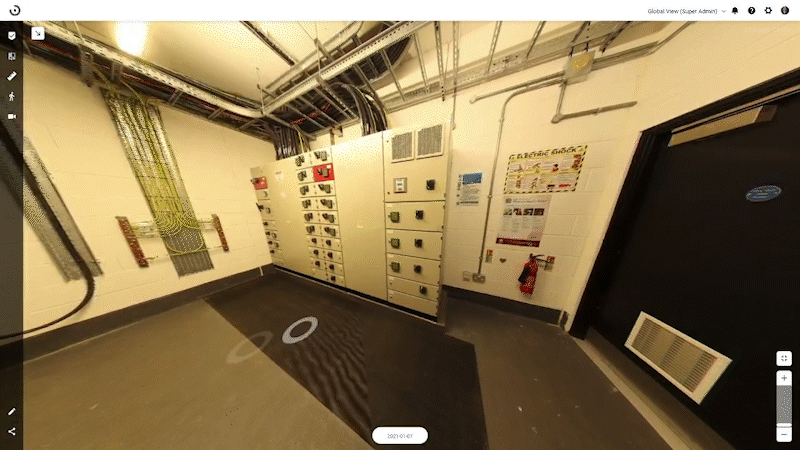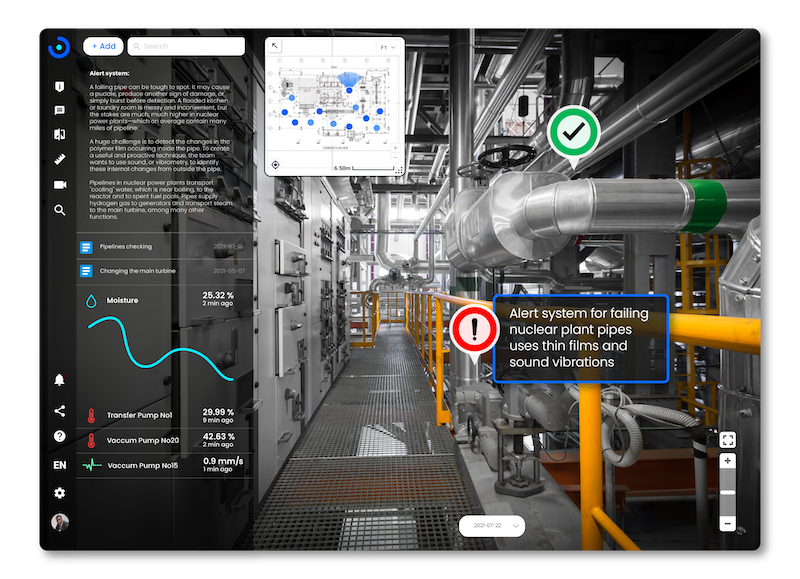The 3D Backbone of the Digital Twin

A Beamo Digital Twin can be defined as a virtual replica of a physical space synchronized at a particular cycle. This virtual replica of an indoor or outdoor space is displayed as a 3D environment.
Beamo's machine learning algorithm displays the result consistently, no matter what device is used or whatever modifications or annotations are added to the 3D Workspace. To improve user experience, Beamo only loads the field of view of the user while the rest of the 3D space dynamically loads on demand.
Unlocking spatial capture, at scale
As the surveyor captures a space, Beamo transposes his position in real-time on a Cartesian coordinate system (X,Y,Z axis). In simple terms, Beamo can understand how the surveyor moves through a three-dimensional space and stitch each 360° picture to his exact location.
To enable Path Tracking, Beamo uses both V-SLAM(Visual Simultaneous Localization and Mapping) and IMU(Inertial Measurement Unit) sensors. Beamo combines visual and inertial mapping just like any person would use their eyes and inner ear to understand and balance movement in 3 dimensions.
Beamo uses what we call a VPS(Visual Positioning System) instead of a GPS. VPS represents a more viable option to capture spaces with extreme precision.
When the digital goes spatial
Beamo gives you the foundation to create your own corporate spatial internet that will let you contextualize site documentation, field training programs, IoT sensor data, operational tasks,...
all in the context of the digitally replicated site of facility.

When Digital Twins meet AI
Understanding Digital Twins
What is a Digital Twin and why you need one.
For Beamo, at the end of the day, the digital twin is all about knowing and understanding how your portfolio of spaces is structured, occupied, and used at all times, without going onsite. The goal is to capture your spaces, augment them and collaborate better within them.